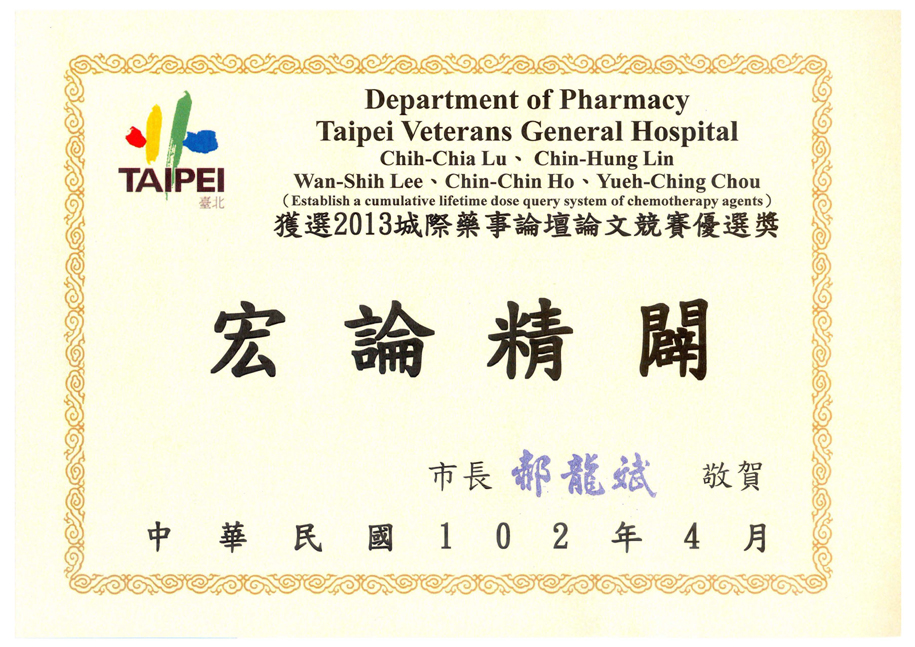城際藥事論壇論文競賽優選獎 建立化療終生劑量系統
|
|---|
|
Background:Cancer has been the leading cause of death in Taiwan for several years. Surgery, radiotherapy and chemotherapy are all available treatments according to different cancer stages. Especially, chemotherapy plays an important role to prolong survival and improve quality of life in advanced or metastatic cancer. However, some adverse effects of chemotherapy agents are closely related to cumulative lifetime dose. The usage of these chemotherapy agents are restricted by cumulative dose-limiting toxicities. For example, anthracyclines, the most common one, may cause fatally irreversible cardiomyopathy, such as congestive heart failure. In order to track the risk of cumulative dose-limiting toxicities, our study establishes an automatically cumulative lifetime dose query system into computerized physician order entry (CPOE) system and electronic medical record (EMR) to improve drug safety based on American Society of Health-System Pharmacists (ASHP) guideline. Methods:We performed a comprehensive literatures search to identify the relevant chemotherapy agents with cumulative toxicities by using Lexi-comp, Micromedex, product information and relevant studies. Furthermore, the system is designed to automatically accumulate lifetime dose of the patient by outpatient and inpatient drug profile database including dose, frequency, duration and body surface area. Each chemotherapy agent is recognized by Anatomical Therapeutic Chemical (ATC) code. For those oral chemotherapy agents, the bioavailability is also used in accumulating lifetime dose to identify systemic exposure. After the bugs were fixed by system testing, the system was formally launched. Results : There are eight chemotherapy agents including bleomycin, carmustine, daunorubicin, doxorubicin, epirubicin, idarubicin, mitoxantrone and oxaliplatin in the database. Idarubicin is available in both oral and injection forms while others are available in injection form. The bioavailability of oral idarubicin is set at 35%. All lifetime dose of chemotherapy agents are accumulated in “mg per square meter of body surface area (mg/m2)”except bleomycin. Bleomycin is accumulated in “mg”. There are three main functions of the system. First, physicians and pharmacists can inquire the cumulative lifetime dose of patients. Second, physicians can input the utilization dose data of patient in other hospitals into our database in order to correctly assess cumulative toxicities. Third, the system administrator can maintain the information of database including addition, modification and deletion. Conclusions:The best way to reduce cumulative toxicities is to restrict the cumulative lifetime dose within lifetime maximum dose and closely monitor. The system can help physicians to determine whether to continue treatment with these agents based on treatment response and risk of cumulative toxicities. And also, the system can help pharmacists to improve the efficiency of verifying medication orders. Further, we will continue to develop a warning system to remind the physician when cumulative lifetime dose of an individual patient exceeds lifetime maximum dose. |
|
|
|
|
最後更新:

